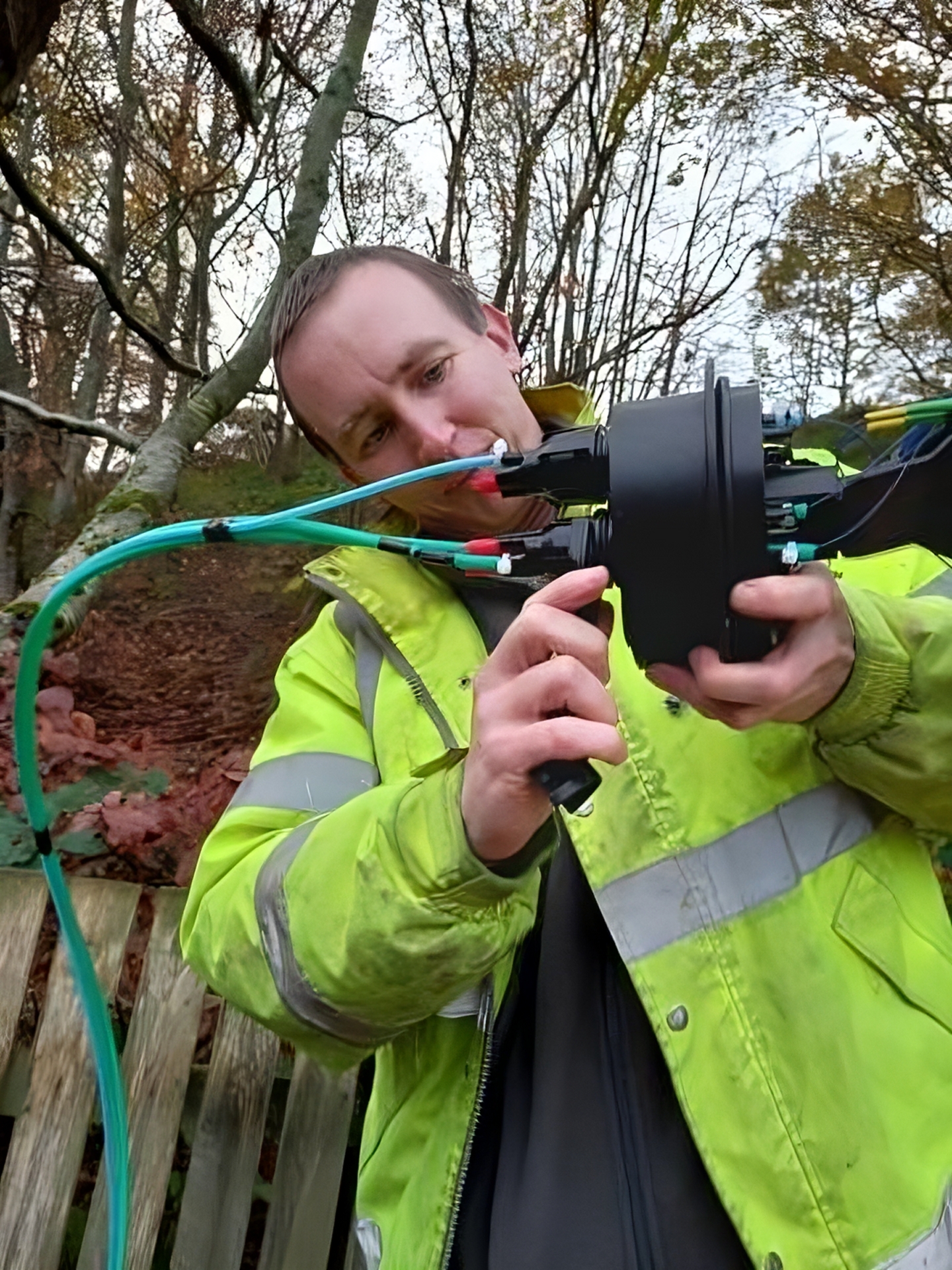If the UK was a little slow to enter the FTTH deployment race in the beginning, it has certainly made up some ground in recent years, with full-fibre coverage reaching 42% of UK homes, or around 12.4 million by September 2022, according to the most recent Market Panorama report figures from the FTTH Council Europe.
Colchester is one city that has seen investment in FTTH connectivity over the last few years, after Colchester Borough Council first received funding in 2017 to bring fibre broadband to Colchester Town Centre. As the dark fibre network grew and spread to more regions in the city, for the installation designers, led by Colm Coyle, managing director of Rio IT, it became clear that space could be an issue when it came to updating the existing infrastructure.
Fibre densification for urban dark fibre network
Said Coyle: “The target was to reach 7,000 people with a new super-fast fibre system, inserted into the existing duct system, which was built mainly to operate CCTV cameras around the area. They only require a relative handful of fibres. For this task, we were going to have to squeeze around 500 individual fibres into a 16mm diameter duct, which means we actually only had 9-11mm of space inside the tube. I needed the densest possible fibre cable to be able to achieve a great result on this project.
Happily for Colm, he found Prysmian’s 552 Sirocco HD fibre cable in time to specify 26km for the project, supplied by Fusion Utilities, and installed by Scotech in a ring around the city. The cable is made up of 552 individual G657A2 fibres, with a fibre density of up to 10.5 fibres per mm2. It uses Prysmian’s BendBright-A2 200µm single-mode (ITU-T G.657.A2) bend insensitive fibre, allowing it to retain enough flexibility to be bent around tight corners without being damaged. The apparatus for blowing the cable was set up at three points, one of which was the Town Hall, from where 26km of cable was blown along the existing duct route, right around the city. The installation was completed in December 2021 with minimal disruption to the community, with no road works or loud maintenance.
“The 552 Sirocco HD fibre cable is awesome,” said Coyle, “It’s really easy to handle and about a quarter of the weight of other fibre cables of a similar capacity. Truly an outstanding piece of engineering.”
Pre-connectorised CMJ closures speed up rural fibre deployment
And it’s not just in urban areas of the UK that Prysmian is helping to connect. The company also successfully trialled its pre-connectorised Compact Multifunction Joint (CMJ) closure during a rural fibre-optic installation between the Atyre Estate and Rafford in northeast Scotland, where it helped to speed up the deployment of fibre to individual properties.
The installation was carried out by alternative internet service provider (ISP) External Reality, led by Richard Allan, Managing Director, who said the closure helped make significant time savings on the installation. "By being able to use pre-terminated blown fibre we're saving between 45 minutes to an hour installation time per property.”

Richard Allan, Managing Director of External Reality, the ISP that carried out the rural fibre-optic installation between the Atyre Estate and Rafford in northeast Scotland (Credit: Prysmian)
The trial took place on the project’s second phase, for which more than 6km of fibre optic cable was installed to 15 properties in the area south of Forres, between the Atyre Estate and Rafford. External Reality had already been using Prysmian Small Joint Closures (SJCs), Ultra Compact Multi Function Joints (UMJs), and CMJs for spliced connections, but as it used pre-terminated cables to speed up final deployment to individual properties, it became apparent that a pre-connectorised joint closure was also required.
Said Allan: "We don't work in big built-up areas, instead we're often targeting about 20 or so properties spread over 2 or 3km. I know splicing has become pretty straightforward, but there is the prep-time involved and you don't want to be sat in the corner of a field in the cold splicing if you can help it, so pre-terminated cables and pre-connectorised closures helps simplify and speed the installation.”
Having trialled pre-connectorised closures from other manufacturers, External Reality found them to be "quite inflexible" and "did not work particularly well". So the team took the opportunity to trial the Prysmian Group pre-connectorised CMJ unit on the final connection to three properties. Local contractors had already buried the ducting and External Reality had installed the pre-terminated cable, so installation was simply a matter of plugging in the fibre to the pre-connectorised closure. "It was good just being able to plug in the cable to complete the installation to this point," explained Allan.
Prysmian’s pre-connectorised CMJ unit (Credit: Prysmian)
A fibre connection from the CMJ closure connects to a Prysmian Hybrid Drop Box (HDB4) on the outside of each property to enable the final connection. External Reality plans to adopt the pre-connectorised CMJ unit on the next phases of its work, says Allen: "We'd definitely use Prysmian's pre-connectorised CMJ unit on future schemes, whenever it is appropriate.”
Find out how Prysmian's pre-connectorised CMJ unit could help maximise your network's efficiency.



